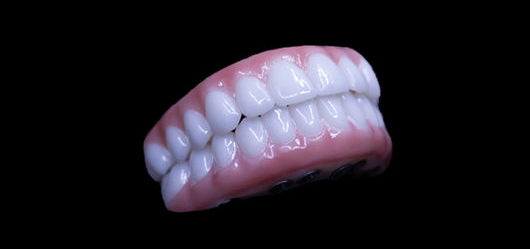The Basic Principles Of Dental Sense
The Basic Principles Of Dental Sense
Blog Article
Little Known Facts About Dental Sense.
Table of ContentsSome Known Questions About Dental Sense.The Ultimate Guide To Dental SenseThe Basic Principles Of Dental Sense The 25-Second Trick For Dental Sense
are medical gadgets surgically dental implanted right into the jaw to recover a person's ability to chew or their appearance. They give support for fabricated (fake) teeth, such as crowns, bridges, or dentures. When a tooth is lost due to injury or illness, an individual can experience problems such as quick bone loss, defective speech, or changes to chewing patterns that cause pain.Oral dental implant systems include a dental implant body and dental implant joint and might likewise consist of a joint addiction screw. Dental implant vs bridge. The oral implant body is surgically placed in the jawbone instead of the tooth's origin. The oral implant joint is typically affixed to the implant body by the abutment addiction screw and expands with gums right into the mouth to support the attached fabricated teeth
(https://issuu.com/dentalsense1)Framework of The Oral Implant System picking oral implants, speak to your oral provider about the possible benefits and risks, and whether you are a prospect for the procedure. Points to think about: Your total wellness is an important factor in determining whether you are a great candidate for oral implants, just how long it will take to heal, and how much time the implant may remain in area.
Cigarette smoking may influence the healing process and decrease the long-term success of the implant. The healing procedure for the dental implant body might take a number of months or longer, throughout which time you generally have a temporary abutment instead of the tooth. the oral implant procedure: Meticulously follow the dental hygiene directions provided to you by your dental supplier.
5 Easy Facts About Dental Sense Described
Implant failing can lead to the demand for an additional procedure to take care of or change the dental implant system. Brings back the ability to eat Brings back aesthetic look Helps maintain the jawbone from reducing as a result of bone loss Preserves the wellness of the bordering bone and gums Helps keep surrounding (nearby) teeth steady Enhances lifestyle Damages to bordering natural teeth throughout dental implant positioning Injury to the surrounding tissues during surgery, such as sinus opening Injury during surgery (as an example, crack of bordering jawbone) Poor function, such as seeming like the teeth do not attack with each other typically An experience that the tooth hangs or turning in position resulting from an abutment screw loosening up Implant body failing (looseness of the implant body) because of systemic infection, which might be much more likely in individuals with uncontrolled diabetes mellitus as a result of local infection in bone and periodontals sustaining the implant body because of postponed healing, which may be most likely in people that smoke Trouble cleaning the periodontals around the dental implant, leading to poor oral hygiene Neglected gum illness Post-surgical tingling as a result of nerve impingement or damages Constantly notify health treatment providers and imaging professionals that you have oral implants prior to any kind of magnetic resonance imaging (MRI) or x-ray procedures.
FDA is not mindful of any type of unfavorable events reported for MRI or x-ray procedures with oral implants. Oral implants systems are usually constructed from materials that follow global consensus requirements of the International Organization for Standardization (ISO) or ASTM International. These requirements have information of what makes a secure material.

A dental implant is a structure that changes a missing tooth. With screw-like tools, the specialist inserts an implant right into the jawbone, and it acts as a support for a man-made tooth, called a crown. A tool called a joint connects the man-made tooth to the oral implant. The crown is customized to fit the individual's mouth and match the color of their teeth.
Not known Factual Statements About Dental Sense
Some people are not eligible for oral implant surgery. It is for oral doctors to operate on individuals with: severe illnessuncontrollable metabolic diseasebone or soft tissue illness or infectionIf these issues are fixed, a person can have the surgical treatment. In, dental doctors avoid operating individuals with: If people with any of the above undergo dental implant surgery, there is a greater threat of the implant failing.

Dental dental implant surgical procedure is an individualized procedure. It's not the same for everyone. Yet the adhering to provides a basic summary of what you can anticipate your dental expert, dental cosmetic surgeon, periodontist or prosthodontist to do: Position the implant operatively. Offer you time to recover. Affix the article and last crown, bridge or denture.
Next off, your surgeon will very carefully position the dental implant right into your jaw. If your dental implant is near the front of your mouth, your dental professional will certainly make a short-lived tooth for you to put on until you heal.
Our Dental Sense Statements
Your service provider can inform you what to anticipate in your circumstance. During the recovery phase, your jawbone should fuse to the oral implant. This procedure, called osseointegration, is vital for stability and long-term success. This process can take anywhere from three to nine months. Sometimes, it might take longer.
When your dental implant heals, your dental practitioner can connect the abutment (tiny port article) and your last repair (crown, bridge or denture). This typically takes concerning one hour to complete and might call for a second minor surgical procedure. You should not feel any discomfort throughout your dental implant procedure due to the fact that your service provider will make use of drug to numb your periodontals.
Report this page